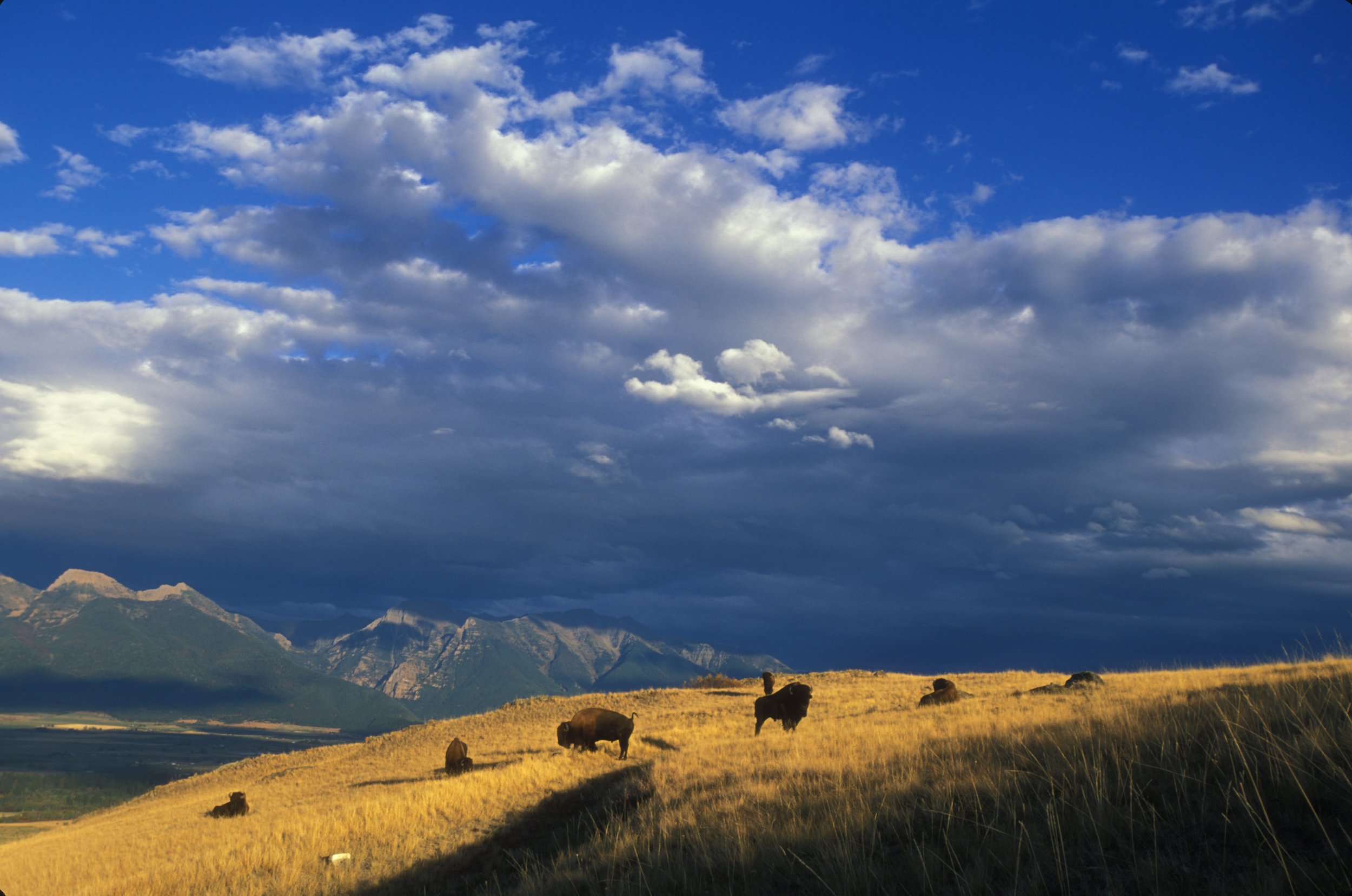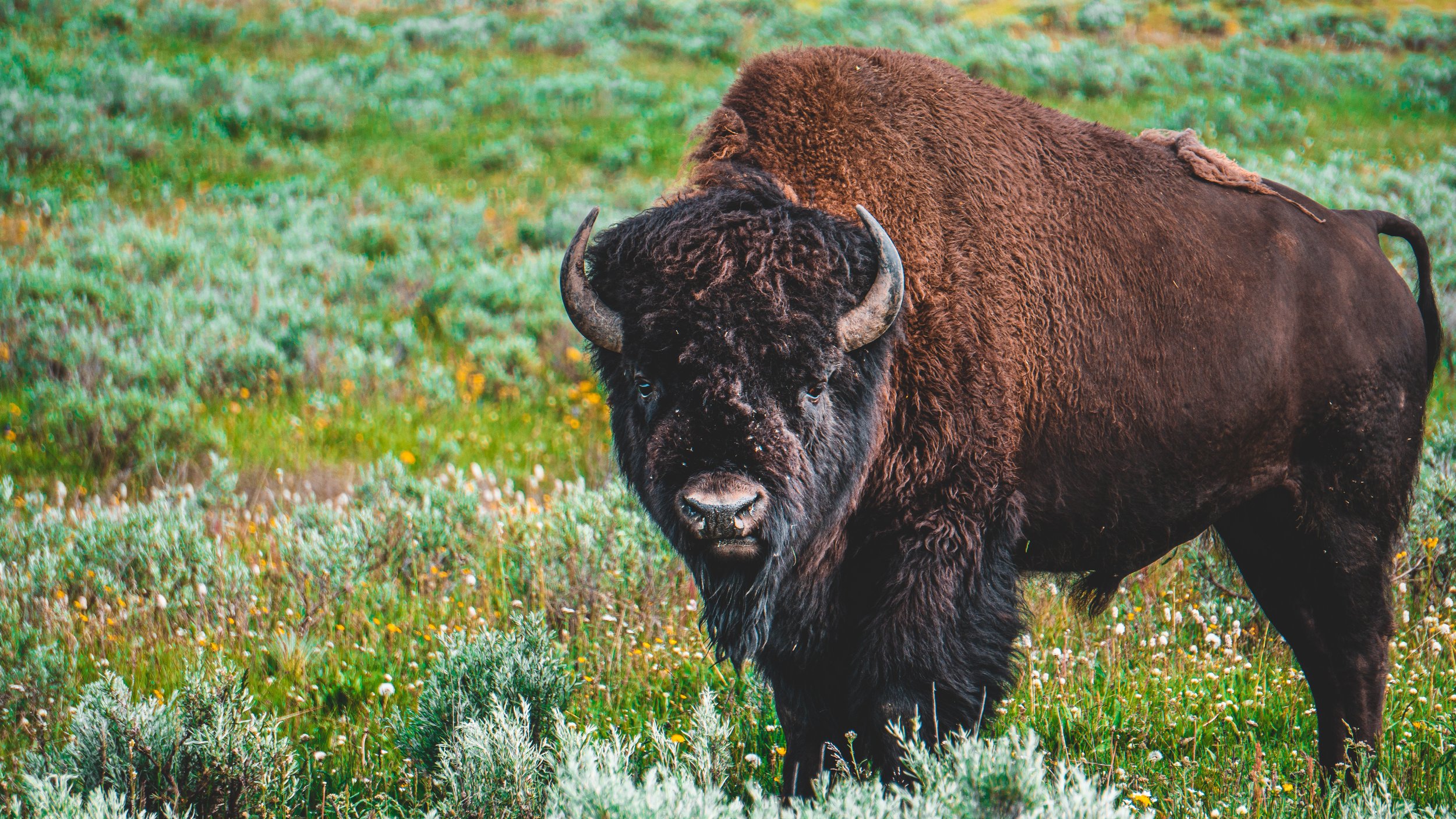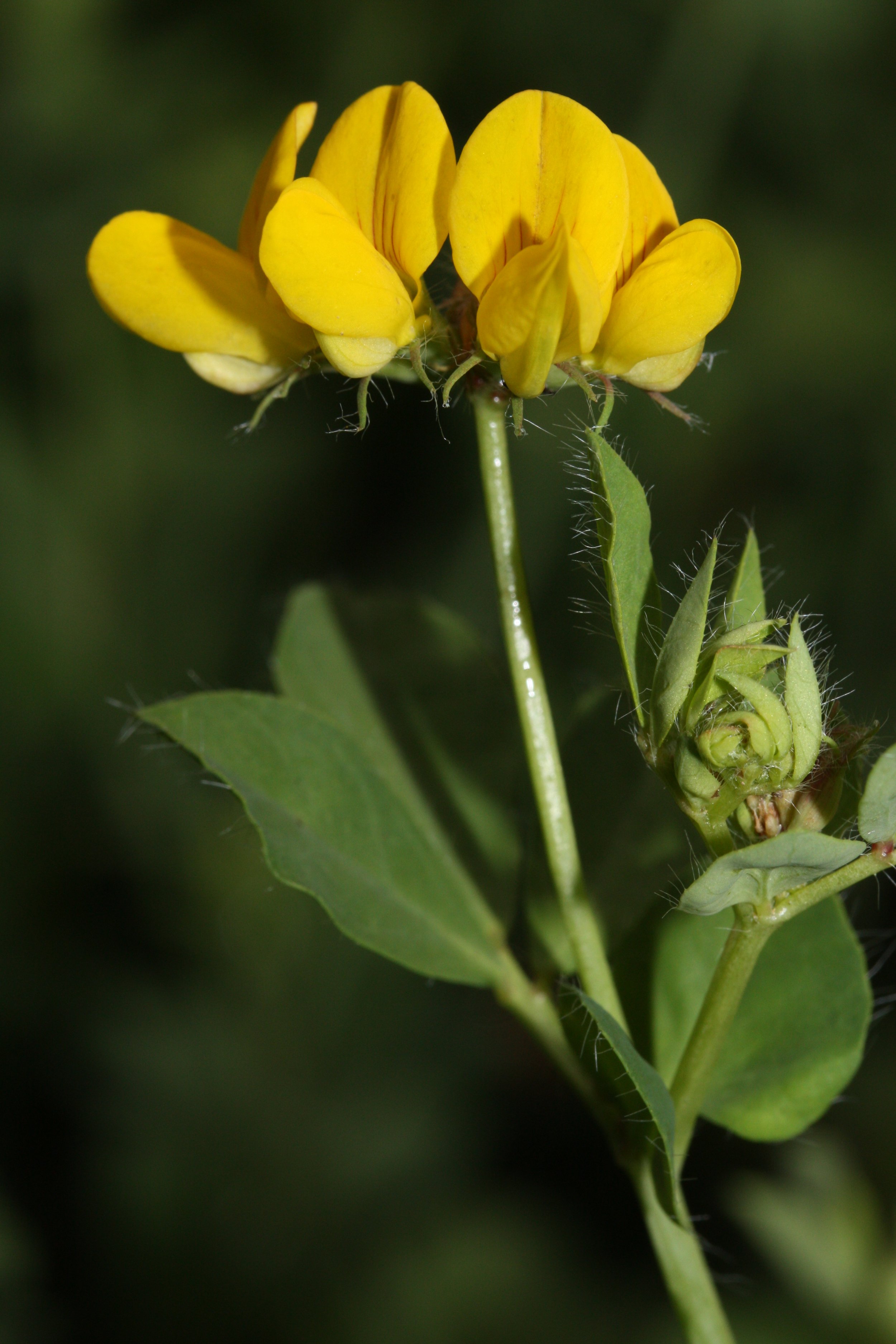Landmark Series—Behind the Bandana: The Bison Range, Montana
Guest User
The Bison Range, formerly known as the National Bison Range, has a rich history and a deep connection to the Flathead Indian Reservation. Established in 1908 by the U.S. Federal Government on land taken without the consent of the Confederated Salish and Kootenai Tribes (CSKT), the Bison Range is home to descendants of a free-ranging herd started by Tribal members in the 1800s. Thanks to Public Law 116-260, Congress restored the Bison Range to federal trust ownership under CSKT, allowing their award-winning natural resource managers to become its stewards. The Tribal Council has adopted the 2019 Comprehensive Conservation Plan developed by the U.S. Fish & Wildlife Service as an interim management plan. Fully owned and managed by CSKT Natural Resource employees since 2022, the Bison Range offers a self-directed driving tour with two scenic drives: the summer-only, 19-mile Red Sleep Drive, featuring breathtaking valley views and walking trails, and the year-round, 14-mile Prairie Drive, which runs along Mission Creek and is ideal for spotting bison, elk, deer, and pronghorn.
(Source: WikiCommons, File Upload Bot (Magnus Manske), Hsmulligan, Artix Kreiger 2)
Let The Bison Range Landmark Bandana be your guidebook to native flora and fauna on your next visit. Here is a closer look at the featured species:
American Bison
Bird’s-Foot Trefoil
Bitterroot
Coyote
Field Chickweed
Monarch Butterfly
Pacific Forktail Dragonfly
Prairie Smoke
Two-Striped Grasshopper
Western Meadowlark
Yellow-Headed Blackbird
(Source: WikiCommons, DcoetzeeBot)
FIELD GUIDE:
Land Acknowledgement:
Glacier National Park is located in the ancestral homelands of the Amskapi Piikani (the Blackfeet Nation of Montana), the Niitsítapi (the Blackfoot Confederacy), the Séliš (Salish), Ql̓ispé (Pend d’Oreille or Kalispel), and Ktunaxa (Kootenai). The state of Montana recognizes the First Nations peoples, these tribes are the original and longest-serving stewards of the lands. The Bison Range is part of the Flathead Indian Reservation. This area has been inhabited for thousands of years and today is home to the Confederated Salish & Kootenai Tribes—the original and continued stewards of this land.
#1. American Bison
Bison have a deep historical and cultural significance. They are considered sacred by Native Americans, who have cultivated a symbiotic and spiritual relationship with these magnificent creatures. Bison are large mammals with tufted fur known for a distinct hump in their back. Males can reach weights of up to 2,000 pounds, standing tall at 6 feet! The grazing style of bison is crucial for maintaining balance in the ecosystem. These majestic beings once freely roamed in vast herds across the Great Plains, shaping the landscapes we know today. Unfortunately, hunting of the bison nearly caused them to go extinct. However, through dedicated conservation efforts spearheaded by tribal councils and nature conservancies, we are now witnessing a remarkable resurgence of these iconic animals. Yellowstone is the only place in the lower 48 states to have a continuously free-ranging bison population since prehistoric times.
#2. Bird’s-Foot Trefoil (Lotus corniculatus)
Birdsfoot trefoil, a perennial member of the legume family, is characterized by its low-growing, yellow, pea-shaped flowers and seed pods resembling a bird’s foot. Another common name is “eggs and bacon” which all refer to the egg-yolk yellow flowers and reddish buds. Thriving in direct light and nutrient-poor soils, it grows 4 inches to 1 foot high and spreads via seeds, rhizomes, and stems. Blooming from late spring to late summer, its flowers may turn orange or red, followed by 1-inch seed pods containing 10 to 50 seeds that can remain viable for a decade.
#3. BITTERROOT (LEWISIA REDIVIVA)
Discover the Bitterroot, a plant named for its distinctive bitter taste and valued for its fleshy taproot, which historically played a vital role in the lives of numerous Native American tribes, including the Shoshone, Nez Perce, and Salish. This revered root was often dried and ground into flour for cooking in soups and stews. Despite its bitter reputation, the Bitterroot serves as a symbol of resilience, celebrated as the state flower of Montana. With its beautiful five-petal flowers that range in color from pale pink to deep purple, the Bitterroot blooms in the spring from April to June, showcasing a delicate yet powerful presence. As the species name "rediviva" suggests, the Bitterroot has a unique ability to restore itself from a lifeless state to one of vibrant renewal when watered.
#4. COYOTE (CANIS LATRANS)
Coyotes are cunning creatures resembling a delicate fusion of wolves and dogs with a slim build, pointed ears, narrow snout, tufted tail, and gray to reddish-brown coat. The name Coyote is Latin for "barking dog" as these pups are infamous for their howling vocalizations. Omnivorous Coyotes are primarily nocturnal and crepuscular (active during dawn and dusk). These pack animals mate for life. Their pups are born blind, only opening their eyes 11 or 12 days after birth.
#5. Field Chickweed (Cerastium arvense)
(Source: WikiCommons, Ser Amantio di Nicolao)
Field chickweed (Cerastium arvense), a member of the pink family (Caryophyllaceae), is a spring-blooming perennial herb found in sunny, open habitats from sea level to over 12,000 feet across North America, though it's less common in the Southeast. Unlike its weedy relatives, common chickweed (Stellaria media) and common mouse-ear chickweed (Cerastium fontanum), field chickweed is native to North America and flourishes in wild habitats.
#6. Monarch Butterfly (Danaus plexippus)
The Monarch butterfly (Danaus plexippus) is easily recognized by its distinctive black and orange wings, signaling to predators that it may be poisonous due to feeding on milkweed as a caterpillar. Regionally threatened, Monarchs have a lifespan of 2 to 6 weeks, with a wingspan of 3.5-4 inches. They lay eggs exclusively on milkweed plants. Monarchs undertake remarkable annual generational migrations: tens of millions overwinter in central Mexico, then disperse in late February and early March, mating and laying eggs on milkweed in Texas. Subsequent generations continue northward, reaching Canada by May and June. The final generation migrates up to 2,200 miles back to Mexico, flying up to 4,000 feet high and averaging 12 miles per hour. This generation lives much longer, up to 7 times the lifespan of intermediary generations, to complete the migration cycle. Since 1990, approximately 970 million monarchs have disappeared due to threats like habitat loss, climate change, and agricultural pesticide use reducing milkweed populations.
#7. Pacific Forktail Dragonfly (Ischnura cervula)
(Source: WikiCommons, EugeneZelenko)
The Pacific Forktail is a common and widespread damselfly, easily recognized by the four tiny blue dots on the black upper surface of the thorax. Measuring just an inch in length, males feature aqua-blue sides on the thorax, a black top on the abdomen, and a notable blue patch on segments 8 and 9. They also have green around the lower half of their eyes and face. Frequenting aquatic edges like ponds, marshes, and drainage ditches, these damselflies are active throughout much of the year, often found in small ponds with abundant duckweed.
#8. PRAIRIE smoke (Geum triflorum)
(Source: Wikimedia Commons: Ser Amantio di Nicolao, Holly Cheng)
Prairie Smoke is a striking prairie wildflower known for its pink feathery seed heads and bell-shaped flowers. After fertilization, its nodding blooms transform into upright clusters of wispy pink plumes, creating a pinkish haze that can last for weeks. The plant's fern-like basal leaves, deeply serrated with hairy margins, often retain their attractiveness through winter, turning shades of red and crimson. Prairie Smoke spreads slowly via rhizomes, making it ideal for dry rock gardens and well-drained soils. It thrives in hot, dry conditions but may struggle in wet winters. Also known as Old Man's Whiskers and Purple Avens, it adds charm to perennial beds and landscapes when planted in groups, though it prefers not to be overshadowed by taller plants.
#9. Two-Striped Grasshopper (Melanoplus bivittatus)
(Source: WikiCommons, Ryan Hodnett)
The yellow-striped grasshopper, a poikilothermic species belonging to the genus Melanoplus, is commonly found across North America, particularly in the Canadian prairies and farmland. This relatively large grasshopper ranges in size from 30 to 55 mm and is easily identifiable by its two pale yellow stripes running from above its eyes to the hind tip of its wings. Its body has a yellowish-green coloration due to chromoprotein and carotenoid. Like other grasshoppers, it features enlarged hind legs for jumping and two pairs of wings, with one set overlapping the other.
#10. Western Meadowlark (Sturnella neglecta)
Despite its striking yellow chest, it was not recognized as distinct from the Eastern Meadowlark until almost 40 years later, when John James Audubon identified it based on its unique vocalizations and named it neglecta for being overlooked. This colorful bird, known for its rich, gurgling song, is the state bird of Montana, Kansas, Nebraska, North Dakota, Oregon, and Wyoming. Nesting on the ground in well-camouflaged domed structures of grasses, some females even add a grass-covered ramp or tunnel up to several feet long. Despite its popularity, the Western Meadowlark faces significant conservation challenges, with its population declining by over 40 percent in the last 50 years due to habitat loss, pesticide use, and human activities such as haying during peak nesting season. Listen to the Western Meadowlark bird call here.
#11. Yellow-Headed Blackbird (Xanthocephalus xanthocephalus)
(Source: WikiCommons, Cephas)
With their golden heads, white patches on black wings, and a call reminiscent of a rusty farm gate, Yellow-headed Blackbirds are hard to miss. These striking birds nest in reeds over western and prairie wetlands, and in winter, they form impressive flocks that sweep across farm fields. Each bird gathers seeds from the ground and leapfrogs to the front of the moving group. Fairly large with a stout body and long, conical bill, males are black with yellow heads and chests, while females and immatures are brown with duller yellow heads. Immature males display some white at the wing bend, unlike females. Yellow-headed Blackbirds breed and roost in freshwater wetlands with dense vegetation like cattails and often forage in open agricultural areas during winter. Listen to the Yellow-Headed Blackbird’s call here.
Ready to geek out on more nature facts? Head over to our Landmark Series page for more.























